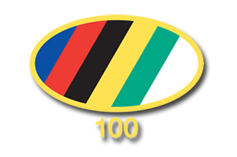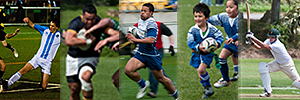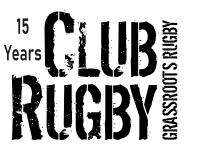Legends of the Jubilee Cup: Peter Osborne (University)

Peter Osborne - pictured above, front row second from left - was a member of the famous University side that won the Jubilee Cup three years in a row 1952-54 and again in 1958. In a star-studded side that variously fielded seven All Blacks and four at the same time in 1953 in superstar wing Ron Jarden, midfielders Jim Fitzgerald and Brian Fitzpatrick and flanker Bill Clark, Osborne was the only player to play in all four of these Jubilee Cup winning teams. What's more, Osborne played fullback so he had the best seat in the house. ?Osborne, who watches most OBU's matches and who will be at the Basin Reserve on Saturday when the Premiers take on Petone, is still active in the club who have described him as Wellington's oldest teenager. We caught up with him for a chat.
What years did your Senior [Premier] playing career for University span?
I played for University from 1951 to 1959. I was in the team that won the Jubilee Cup for three years in a row, then we let some other clubs have a turn before we won it again in 1958 with a completely different side than the one from six years earlier.
You went to Hutt Valley High School? There was something in the water out there as the school also produced several other stars at around the same time?
I was two years behind Ron Jarden at Hutt Valley High School. I knew the Jarden family well and was mates with his younger brother Lester. Hutt Valley High had a very good First XV for a few years in the mid to late 1940s. In my first year in the team in 1946, aged 15, future NZ cricket captain John Reid was an excellent first five-eighth, future All Black Jim Fitzgerald was the second five-eighth, future Commonwealth Games hurdler Lionel Smith was the centre, Ron Jarden was on one wing, a future Hutt Club player Brian Baxter played on the other wing and I was at fullback. So it was a potent school team.
John Reid probably would've been an All Black but in 1946 he got Rheumatic Fever and they said to him you will never play sport again. This was true of rugby, but as we know, he got back into cricket and excelled. ?Other players to play for this First XV at around the same time included 1950 Commonwealth Games sprinter Don Jowett and future All Black first five-eighth Colin Loader. The headmaster was Norman Millard, whom the former stand at Athletic Park was named after.
You then joined the University club in town?
I initially joined the Woburn club in the Hutt [now part of Hutt Old Boys Marist] and played two years there. Then one Sunday night in 1950 Ron Jarden rang me and asked who are you playing for next year, why don't you come and play for University? He explained that they were building up a team and that it would be will worth me coming and seeing how I went. So I did. But I missed most of that first season in 1951 after I broke my wrist after two games.
You returned in 1952, the year that University won the Jubilee Cup for the first of three consecutive seasons and played in the famous season opener when you smashed defending champions Poneke 37-0, and from there the team went on to score 50 tries in 15 matches?
Yes, the team really gelled in 1952, 1953 and 1954. As well as Ron in the backs, who had made the All Blacks for the first time the previous year, our backline from 1952 had Jim Fitzgerald who was returning from university at Otago and Brian Fitzpatrick, both of whom became All Blacks.
The key to this side was the training we put in and our dedicated coaches, Dick Burke and Ken Uttley, who drilled us hard and created a positive game plan. A mantra that we played by was that we didn't care how many tries the opposition scored as long as we scored more. Uttley would say that I don't really care how many tries that the other side score but you have just got to score more, and that is all that mattered. So when we went out on to Athletic Park in this first game in 1952 against Poneke that was our philosophy. No one really knew what to expect - and we absolutely demolished them. Different type of game of course, you could move the ball wide and create space more freely.
You played all your games on Athletic Park as well?
In those three years from 1952-54 I played on Athletic Park in every match except one. We didn't always play the 3.00 pm match; sometimes we played the early game. This was because the rugby union realised what a money spinner University were and the crowds came to watch us because of the attractive brand of rugby we were playing. We had 25,000 people once at a club game, and we regularly played in front of 10,000-strong crowds. ?

What made Ron Jarden such a good player?
The man was an absolute fanatic in everything he did. He held sprinting records, he was a swimmer, a boxer, a very good tennis player. He took up golf later in life, played it for seven or eight years and then gave it away because he couldn't crack a single figured handicap. So then he took up yachting. He was a driven man; whatever he did he had to try to be the best. He wasn't a tall man, but he was fast, explosive and just so committed. He died in 1977 and was only 47 when he died.? He was out on a training run for yachting when he had a heart attack and died.?
What about players you played with and against, particularly fullbacks?
All Black Bob Scott came to Wellington and joined Petone. Scott was a beautifully balanced player. We used to play with leather balls, and once they got heavy and wet they were hard to control. A Wellington businessman and sports supporter named Caesar Cohen used to take us up to Athletic Park at lunchtime and it was at these sessions that Bob showed me how to hold and kick a rugby ball. And I only wish today that he was still around to pass on these skills. Bob's system was that instead of just throwing the ball up and then booting it you placed it on your foot and as a result you can control what you are doing so much better.
The Poneke fullback Morrie Hodson and I used to vie for the representative fullback position. This was prior to Mick Williment coming on. In my final year in the team in 1959 I was picked at fullback and Mick was picked on the wing.? I was more the defensive type of fullback and Mick was the attacking player and he was coming into his prime at that stage.
Who were the other strong clubs in Wellington club rugby in the 1950s?
Petone were strong throughout my career, with guys like Don McIntosh and Bob Scott in their sides. Onslow were also very strong, as were Marist who used to be two clubs in Marist and St Pat's Old Boys. Ories were not as strong as they are now; Poneke certainly were; Hutt Old Boys with some other ex-Hutt Valley High School guys were tough to beat; Wellington used to field a big forward pack and a win against them was never assured.
You also played several seasons for Wellington and also for the New Zealand Universities side?
Yes, I played about 25 or 30 matches for the Wellington representative A team over a period of several years. I remember my first game for Wellington against Auckland when I got a hairline skull fracture. Of course in those days I went into hospital for three or four days and then after a bit more rest I was back into it. I came right, although people say no actually you didn't come right! I really enjoyed playing for the New Zealand Universities team as well, that was a fantastic experience.
After your retirement did you stay actively involved in the game in a coaching or administration capacity?
I did a little bit of coaching but decided that I wasn't going to be a good coach so I carried on in administration.
I'm a Life Member of the Centurions RFC and I used to organise all the lunches they have. There's a lunch coming up prior to the All Blacks Test on Friday 12 September. I was also President of the Wellington Rugby Football Union in 1992 and 1993. I have also been involved as President of Wellington Tennis and of New Zealand Tennis. I have always been a great believer in giving back to what you do.
Club-wise, I was President of University in the 1980s and was later President of OBU for three or four years. I still have a good connection with rugby through Old Boys University. It's a strong club; we have got a team in the top two competitions which reflects this.
What were the reasons for the amalgamation of the University and Wellington College Old Boys clubs in 1991, and what have been the benefits?
Both clubs were starting to struggle and at that stage we didn't have a very firm base. Both clubs felt that we had enough in common to make it work, such as a common source of players from Wellington College who would then go on to university.
It took a while to get clubrooms for the new club. We tried various places and then we found the Cambridge Hotel, which was done up and became our base. Now we have got that inner room there with our memorabilia on the walls. People say how do run a rugby club out of a pub? I say very successfully. A lot of other clubs have got to worry about staffing, catering. We put on a complimentary barbecue meal every week for visiting teams.
We have also got our fantastic training facilities at Boyd Wilson Park. The rugby club built the gym up and later installed a synthetic surface. With great support from the club stalwarts, Victoria University funded the resurfacing of the ground a few years ago, and this has been a huge asset for all VUW students as well as rugby players.
What are the differences in rugby between your era and now, how would the 1950s University side go against today's OBU team?
A key difference is having forwards constantly in the backline today. How we used to play was our flankers would be standing in behind the backline and acting as sweepers and tidying up dropped ball and the backs would do the running, passing and kicking. It was a lot more decisive.
Similarly, we weren't spiral-passing, the ball was always presented so that you could run on to it. Speed was not something we were lacking. It terms of a possible game-plan in an imaginary match between my team and the current team it would be get the ball out to Jarden!
I actually reckon our full-strength 1950s team would beat today's side because we would play as a team. Today's defence is too often far too porous. That was proved just week when OBU were leading the Upper Hutt Rams 30-20 with a few minutes to play and they opened us up at the end and beat us. Both our 1950s coaches would've walked out. We used to practice on Sunday mornings and I wouldn't have liked to have been at practice the next day.
On that note, how tough was training on a Sunday morning for body and mind, or were you tucked up in bed at 9.00 pm?
We used to enjoy the social side of the game just as much as today! These were the days of 6 o'clock closing so we were at the bar early and then invariably off to social engagements afterwards. Generally though, nothing like a run around to wear off any ill-effects of the previous day's game and evening.
How come you retired when you did, after the 1959 season?
I started playing for University aged 20 and I was 28 at the time I finished. I have always been a great believer that you get out of anything when its time. When you have finished something drop out, don't hang around. I also realised that Mick Williment was coming through and was probably going to take my place in the side, so I was happy to leave when I did.
?
Steven White, 19 Mar 2019
Adam Julian, 19 Mar 2019
Steven White, 12 Mar 2019
Adam Julian, 04 Mar 2019
Steven White, 12 Feb 2019


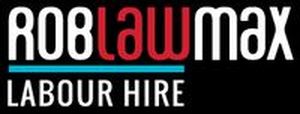
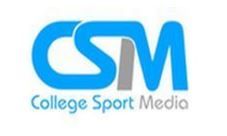


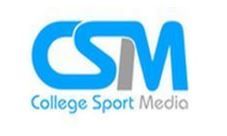
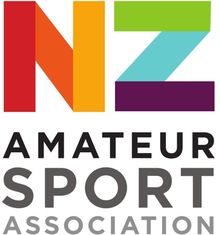
.jpg)
